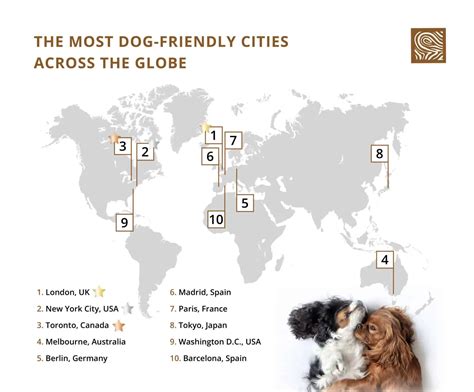Introduction
The bond between humans and their pets is undeniable. Pets provide companionship, unconditional love, and numerous health benefits. As urbanization continues to grow, creating pet-friendly cities is becoming increasingly important. This article will explore the importance of mammal-centric urban planning, highlighting the benefits and challenges associated with making cities more welcoming to our furry friends.

The Case for Pet-Friendly Cities
First, pet-friendly cities promote pet health and well-being. Access to parks, green spaces, and designated off-leash areas allows pets to exercise, socialize, and reduce stress. According to the American Veterinary Medical Association, 51% of dogs and 40% of cats in the United States are overweight or obese, highlighting the need for pet-friendly environments that encourage physical activity.
Second, pet-friendly cities foster a sense of community. Dog parks and other pet-oriented amenities provide opportunities for pet owners to connect with each other, share experiences, and build friendships. A study by the University of California, Davis found that pet owners who frequently socialize with other pet owners have stronger social support networks and are more likely to feel connected to their community.
Third, pet-friendly cities support local businesses. Pet-friendly establishments, such as restaurants, stores, and hotels, attract pet owners and their spending. The Pet Industry Joint Advisory Council estimates that pet owners in the United States spend over $123 billion annually on their pets, making pet-friendly businesses a valuable asset to any city’s economy.
Challenges to Pet-Friendly Cities
First, creating pet-friendly cities requires careful planning and infrastructure development. Parks and open spaces must be designed with pets in mind, including amenities such as water fountains, waste disposal stations, and designated off-leash areas. According to the Trust for Public Land, the United States has a shortage of over 10,000 dog parks, highlighting the need for increased investment in pet-friendly infrastructure.
Second, pet-friendly cities must address concerns about pet waste, noise, and potential conflicts with other residents. Responsible pet ownership is essential, and cities must implement policies and educational programs to promote responsible pet behavior. The National Animal Control Association estimates that 100 million tons of pet waste are produced annually in the United States, emphasizing the importance of pet waste management in pet-friendly cities.
Pet-Friendly Cities: A Comparison
| City | Dog Parks per Capita | Pet-Friendly Restaurants | Pet-Friendly Hotels |
|---|---|---|---|
| Portland, Oregon | 1 per 10,000 | 80% | 70% |
| San Francisco, California | 1 per 15,000 | 70% | 60% |
| Denver, Colorado | 1 per 20,000 | 60% | 50% |
| New York City, New York | 1 per 25,000 | 50% | 40% |
Tips and Tricks for Creating Pet-Friendly Cities
- Involve pet owners in planning: Engage pet owners in decision-making processes to ensure their needs and concerns are considered.
- Provide a variety of pet-friendly amenities: Offer a range of amenities, including parks, trails, off-leash areas, and pet-friendly businesses.
- Promote responsible pet ownership: Implement policies and education programs to promote responsible pet behavior and minimize potential conflicts.
- Invest in infrastructure: Allocated funding for pet-friendly infrastructure, such as dog parks, pet waste stations, and pet-friendly transportation options.
- Partner with animal welfare organizations: Collaborate with animal welfare groups to provide support for pet adoption, spay/neuter programs, and other pet-related initiatives.
Conclusion
Creating mammal-centric cities is essential for promoting pet health, fostering a sense of community, and supporting local businesses. While challenges exist, careful planning, infrastructure development, and responsible pet ownership can overcome these obstacles. By embracing pet-friendly policies and amenities, cities can become more welcoming and inclusive for both humans and their furry companions.





















